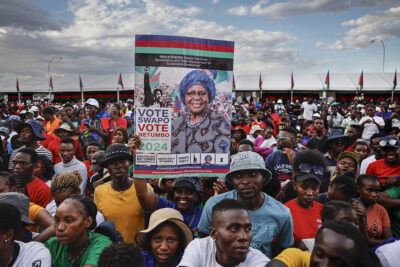Since at least the Spanish-American War, the United States has helped develop Latin American militaries and police forces, providing training, up-to-date technologies, and technical assistance. While we might conventionally consider questions about security and questions of political economy as separate spheres of analysis, a close look at how economic shifts affect security concerns, and how security assistance shapes political and economic transformations, indicates the persistence of a strong relationship between security objectives and political economy. Outlining these links reveals trends of change within continuity. Even as Washington’s effort to endow Latin American states with powerful security apparatuses has reconfigured the possibilities for US capital to reap easy rewards from its alliances with elites in Latin American and the Caribbean, the purposes and forms of US security assistance have both shifted and remained, in important ways, unchanged.
In fact, an examination of the historical record demonstrates that the security assistance of each period helped to create the security challenges of the next one, which new rounds of assistance would in turn confront. In the current period, reverberations are being felt throughout the hemisphere—including here in the United States—because of the “War on Drugs,” fought from the Andean highlands to the US-Mexico border and beyond. But what I call, drawing on Greg Grandin, the “long counterrevolution” started in the nineteenth century, as the United States increasingly exerted its influence throughout the Americas.1Greg Grandin, “Living in Revolutionary Time: Coming to Terms with the Violence of Latin America’s Cold War,” in A Century of Revolution: Insurgent and Counterinsurgent Violence during Latin America’s Long Cold War, eds. Greg Grandin and Gilbert M. Joseph (Durham, NC: Duke University Press, 2010), 1–42.
Gunboat diplomacy and occupation as security cooperation
As the Spanish Empire collapsed at the turn of the twentieth century, the United States saw an opportunity for regional self-aggrandizement at a key moment of global uncertainty. The Spanish Empire’s decline had already been occurring for over a century when the United States occupied Cuba and Puerto Rico in 1898, but recent economic crises provided new opportunities.2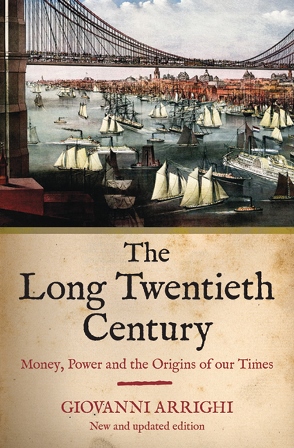 New York: Verso, 1994More Info → Thanks to the Monroe Doctrine, the independent republics across Latin America maintained strong, if not always willing, ties to the United States. Economic upheavals in the region from the 1870s through the 1890s created a new purpose for the United States, which was to bend local economies to the desires of US elites. Theodore Roosevelt’s 1904 Corollary to the Monroe Doctrine further entrenched this orientation, by commanding the United States to exercise “international police power” to maintain political and economic stability.
New York: Verso, 1994More Info → Thanks to the Monroe Doctrine, the independent republics across Latin America maintained strong, if not always willing, ties to the United States. Economic upheavals in the region from the 1870s through the 1890s created a new purpose for the United States, which was to bend local economies to the desires of US elites. Theodore Roosevelt’s 1904 Corollary to the Monroe Doctrine further entrenched this orientation, by commanding the United States to exercise “international police power” to maintain political and economic stability.
Direct invasion or overt occupation was the occasional form of US intervention in Latin America (17 in the century after 1898), and the construction of security forces afterward, with or without occupation, ensured Roosevelt’s corollary would remain in effect.3John H. Coatsworth, “United States Interventions: What For?” ReVista: Harvard Review of Latin America (Spring/Summer 2005): 6–9. These early US occupations saw the creation of new security forces—for example, the US Marines’ assistance to Nicaragua’s Guardia Nacional—designed to foster the most basic forms of economic development while also repressing revolutionary movements that might rebel against the prevailing socioeconomic order.
This first period of US security assistance in the region barely merits the term assistance, which implies recognition of another nation’s sovereignty. Instead, it was marked by sovereignty’s abrogation. Huge US firms dictated economic terms, particularly in the Caribbean and Central America, where agriculture dominated economies. Local elites, typically large landowners, worked in concert with US firms. Security meant assuring the sanctity of their landholdings and the necessary supply of peasant laborers to work the land. Infrastructural development or what was later called “civic action” came at the behest of US Marines and utilized corvée labor for the benefit of US corporate interests. US boots were on the ground and US fingers on triggers. The local security forces that resulted were often poorly trained, ill-equipped, and haphazardly organized, yet still capable of brutal repression.
The Mexican Revolution and a new rising class of Latin American elites changed this dynamic. The Great Depression’s deep effects on Latin America highlighted regional interdependence. The integrated system of hemispheric economic tribute that had emerged since the turn of the century had done less to raise national livelihoods than it had to make them vulnerable to system-wide losses. The new model of governance proposed by the Mexican Revolution, which vested land and other resources in the collective hands of the nation, along with a belief that regional solidarity might protect against ongoing violations of economic sovereignty from the North, led Latin American elites to make new demands on the United States. This push resulted in a new approach to the region—President Franklin Delano Roosevelt’s 1933 “Good Neighbor Policy.” Now, the United States would nominally refrain from intervening in the domestic affairs of its neighbors to the south. The period of occupations came to a close, and the classic period of security assistance soon began.
Counterintelligence and the suppression of labor organizing
Starting before World War II and continuing into the Cold War, the new period of security assistance differed from the previous by empowering local elites who were seen as reliably amenable to US political and economic demands. Although agricultural exports remained a key economic sector, local development turned toward import-substitution industrialization, which, in turn, expanded the industrial working classes and their organizations. Fears of labor radicalism in the hemisphere rose, deepening US concern with industrial organizing and strike activity.
Another key feature was the use of local security forces as proxies; the only US boots on the ground were in advisory and training capacities. The agencies in charge of security assistance also shifted. Whereas the US Marines provided assistance early on, by the 1940s, the Federal Bureau of Investigation (FBI) was assisting police forces. This civilian (not military) security assistance continued through the Cold War, under the auspices of the US Agency for International Development (USAID), alongside military assistance. However, US security advisors struggled with the combined character of many Latin American security apparatuses, which did not always distinguish civilian police from military. In response, training often overlapped. Police were afforded heavy weapons and militaries received training in countering so-called subversion.
“Methods of counterintelligence used to monitor Nazis in Latin America were used to monitor the Left.”At first, Good Neighbor security assistance aspired to control connections between Latin America and Japan, Italy, and Germany. As war became imminent, the United States mounted a counterintelligence program to ferret out Axis spies or other agents and to keep track of their economic entanglements in the hemisphere (especially with regard to military supplies). J. Edgar Hoover, director of the FBI, supervised a new and covert Latin American security assistance mission, called the Special Intelligence Service (SIS).4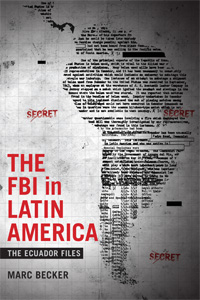 Durham, NC: Duke University Press, 2017More Info → Although the Good Neighbor Policy signaled a shift in hemispheric relations, Hoover’s SIS signaled a continuity: maintaining US interest in local security forces in the region, this time by exporting the FBI’s obsession with communism south of the Rio Grande. Methods of counterintelligence used to monitor Nazis in Latin America were used to monitor the Left. Officers learned how to use informants and manufacture pretexts for arrest, along with technical investigatory methods. The FBI’s actions shaped the Left’s tactics, strategies, and goals in these countries by enabling governments to engage in surveillance and repression. US fears of communism outlived the concern with the Axis powers, and so did these techniques of counterintelligence.
Durham, NC: Duke University Press, 2017More Info → Although the Good Neighbor Policy signaled a shift in hemispheric relations, Hoover’s SIS signaled a continuity: maintaining US interest in local security forces in the region, this time by exporting the FBI’s obsession with communism south of the Rio Grande. Methods of counterintelligence used to monitor Nazis in Latin America were used to monitor the Left. Officers learned how to use informants and manufacture pretexts for arrest, along with technical investigatory methods. The FBI’s actions shaped the Left’s tactics, strategies, and goals in these countries by enabling governments to engage in surveillance and repression. US fears of communism outlived the concern with the Axis powers, and so did these techniques of counterintelligence.
With increasing industrialization, working-class syndicates and unions grew alongside extant peasant organizations. Mexican labor leader Vincente Lombardo Toledano was of particular interest to SIS, with his moves charted and his speeches recorded. The Mexico-based Confederación de Trabajadores de América Latina tried to organize workers across the region, as FBI agents reported. For instance, the confederation successfully called for work stoppages throughout Latin America in January 1945. To keep tabs on unions and also to collect economic and industrial data, the FBI was embedded in corporations as well as diplomatic posts. Such information shaped how the State Department and other power centers in the US government, as well as industry, comprehended and approached the region.
But this period saw political ferment beyond trade-union activities. After the war, many countries embarked on major programs of economic and political reform. For instance, both Guatemala and El Salvador experienced left-oriented but not communist political transformations, while Ecuador experienced a popular-democratic revolution. Not every event in Latin America was the result of Soviet influence or communist organizing, but neither was the United States really in control of regional politics. This turbulence transformed the region, occurring alongside increased urbanization and industrialization, changes in agricultural labor due to the green revolution, and new infrastructure projects. The spate of development and proletarianization post–World War II seemed to augur a miracle of modernization, a noncommunist revolution. Marked increases in literacy, life expectancy, and political participation occurred. But these gains were uneven regionally and within countries themselves.
The expansion of democracy entailed a simultaneous counterrevolution, aiming to block the marginalized from developing political cohesion. To ensure this outcome, US and local elites prevented poor people’s access to power in the fields and on the shop floors and by instilling fear of reprisals for demands for equality and democracy. Security assistance was a key catalyst.
The regional counterrevolution
Security assistance in the middle of the twentieth century cemented regional US hegemony. It also created the conditions for the insecurities of the late twentieth century, by bolstering independent local elites supported by well-equipped security forces with capabilities of repression far exceeding any security threat. Cold War–era security assistance was directed at fostering integral and sovereign power under the mistaken assumption that security forces, local elites, and US interests would remain aligned in perpetuity. But the creation of semiautonomous security forces actually enabled these forces and the local elites connected to them to shear away and pursue other goals. Military dictators apotheosized the trend.
“The Cold War was far from cold in Latin America, with hundreds of thousands killed and millions displaced.”The high period of US security assistance began with the US-backed coup in Guatemala in 1954. Soon the United States was offering civilian security assistance to police forces throughout the hemisphere (and across Asia and Africa). While US counterintelligence efforts still empowered local police, Hoover’s FBI was sidelined in favor of the Central Intelligence Agency (CIA), which operated through civilian development agencies. Still, the methods of USAID’s public safety assistance replicated SIS blueprints in key ways. Thousands of police and military officers traveled to US-run academies to learn methods for use at home, and for vetting and ideological cultivation. The Cold War was far from cold in Latin America, with hundreds of thousands killed and millions displaced. US fingers were not directly on the triggers, but Washington supplied the guns, the bullets, the marksmanship training, and the surveillance technologies to track targets.
Security assistance throughout this period maintained its focus on labor radicalism, but repression of industrial workers changed the dynamics of political contention. Repression of Ecuadorian radicals in coordination with the FBI in the 1940s, for example, led some to develop programs of armed self-defense or to go into hiding underground and organize clandestinely.5Becker, The FBI in Latin America. This dynamic became even more pronounced across Latin America in the 1960s. Strictures on open and democratic organizing fostered more extreme and violent responses in the forms of extraparliamentary groups of urban guerrillas, as well as the “foco” strategy developed by Che Guevara. In turn, new forms of insecurity seemed to demand deeper security assistance. Alarmed liberal members of the US Foreign Service were well-aware human rights violations were occurring in the mid-1960s, thanks to US technical aid, but to security advisors abuses only signaled the need for more assistance, training, and technical reform.6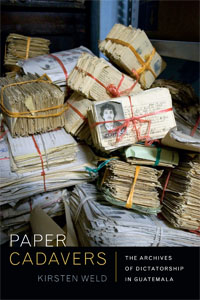 Durham, NC: Duke University Press, 2014More Info →
Durham, NC: Duke University Press, 2014More Info →
Not every country received the same type or level of technical assistance, which shifted based on US intelligence analyses of security risks. Paraguay, for example, is widely acknowledged to have had one of the most consistently repressive governments in the region. Like other US-aligned dictatorships in the region, it received a small amount of FBI assistance under the SIS program, but did not receive USAID public safety assistance. Paraguay did, however, serve as a regional beachhead for CIA covert operations, and there is some evidence that the United States unofficially funneled weapons to paramilitaries and right-wing death squads beginning in the 1960s through there. In contrast, in Ecuador the United States directly initiated a public safety program, introducing arms, training, and advanced equipment for surveillance and riot control. In the 1960s, Ecuador experienced the extremes of both the massacre of indigenous peoples as well as police restraint “so noticeable that students published a handbill” during a 1968 strike that “praised” officers for not committing a massacre.7→Robert K. Thierry and Robert J. Weatherwax, Report on the National Police Forces of the Republic Of Ecuador (Washington, DC: International Cooperation Administration, January 1959), 93.
→Diana Jean Schemo, “Files in Paraguay Detail Atrocities of U.S. Allies,” The New York Times, August 11, 1999.
→Byron Engle, “Public Safety Highlights,” September 6, 1968; “Highlight” Reports; East Asia (Regional), Entry 31; Records of the Agency for International Development, Record Group 286; Box 25; US National Archives and Records Administration, College Park, MD. More broadly, an individual country’s particular political system and elite composition explains what US assistance could achieve more than the presence of US personnel alone: the same US advisor deployed to both Paraguay and Ecuador in these examples, with different results.
Congress terminated USAID’s public safety program in 1974, in part due to accusations its advisors taught torture methods in Brazil. This termination did not dramatically reconfigure relations with Chile, Argentina, and Paraguay, which for different reasons did not have public safety programs by that time. These countries had become nodes in new regional networks of security assistance that bypassed the United States, even if their anticommunist orientation aligned with US demands. With many radicals in exile, these and other nation’s intelligence agencies cooperated to pursue them across borders in what became known as Operation Condor, building on communications and intelligence-sharing tools constructed by USAID throughout the hemisphere.8→John Dinges, The Condor Years (New York: The New Press, 2004).
→J. Patrice McSherry, Predatory States: Operation Condor and Covert War in Latin America (New York: Rowman & Littlefield, 2005). Argentina also was by the 1980s providing security assistance and training to Central American forces engaged in civil wars.9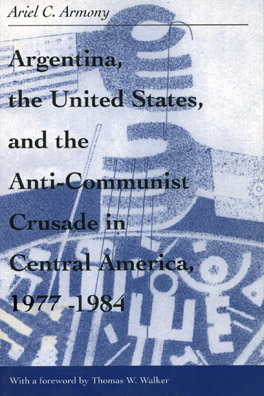 Athens, OH: Ohio University Press, 1997More Info → These regional networks of military and intelligence cooperation dovetailed with emergent anticommunist far-right organizations, which would burst into the headlines by the late 1980s due to the Iran-Contra Affair.
Athens, OH: Ohio University Press, 1997More Info → These regional networks of military and intelligence cooperation dovetailed with emergent anticommunist far-right organizations, which would burst into the headlines by the late 1980s due to the Iran-Contra Affair.
The termination of public safety assistance caused US security aid to take on new guises, most notably narcotics control. The number of police and paramilitaries trained during the 12 years of USAID’s public safety program was matched and then surpassed in the first 12 years of the Drug Enforcement Administration’s existence, after 1973. In the 1980s, overseas police assistance resumed, managed by the Department of Justice. With the defeat and dissolution of many urban guerrillas, priority shifted to narcotics control as the new cover for the suppression of rural insurgency.10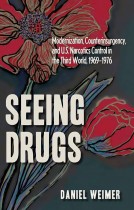 Kent, OH: The Kent State University Press, 2011More Info →
Kent, OH: The Kent State University Press, 2011More Info →
The War on Drugs and US decline
With military dictators ruling many countries in the hemisphere, security forces became even more unleashed. But at the same time, the global economy was shifting. Key to the transformation was the glut of petrodollars that grew with rising oil prices, coinciding with the end of the Bretton Woods system of currency controls. That money sought profitable outlets, and one was as loans to Latin American countries. The foundation was set for the hemispheric wave of debt crises beginning in 1982.
“Democratic regimes, rather than military autocracies, would be afforded up-to-date security capabilities.”In the 1980s, militaries across the hemisphere engaged in brutal campaigns against peasants, including many indigenous groups. After its curtailment in the 1970s, US security assistance ballooned in the 1980s. Scholars and investigative journalists have documented the degree of US awareness and even encouragement of abuses. In addition, the United States returned to the oldest form of intervention in the 1980s and 1990s, abrogating the sovereignty of Grenada, Haiti, and Panama by military invasion. All the while, arm’s length security assistance continued across the hemisphere, as did US-funded promotion of putatively democracy opposition to left-leaning governments.11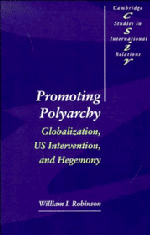 New York: Cambridge University Press, 1996More Info → Democratic regimes, rather than military autocracies, would be afforded up-to-date security capabilities. Beginning in the late 1990s, new legal restrictions from Congress attempted to limit assistance to gross violators of human rights, but exceptions still abound.
New York: Cambridge University Press, 1996More Info → Democratic regimes, rather than military autocracies, would be afforded up-to-date security capabilities. Beginning in the late 1990s, new legal restrictions from Congress attempted to limit assistance to gross violators of human rights, but exceptions still abound.
The insurgency/counterinsurgency dynamic in a country like Colombia meshed with the massive expansion of its drug-export economy, leading to functional indivisibility of the state and the cartels, legitimate and illegitimate economies. Strict prohibition in the United States made narcotics extremely lucrative and fed money laundering and real estate speculation. The composition of elites in Latin America began to shift, particularly with the massive windfalls attendant to privatization of state-held infrastructure and assets in the 1990s. No longer concerned only with domestic affairs, Latin American elites joined a transnational class of investors, and their relationship to local security concerns shifted as well. Suppression of urban and rural worker militancy gave way to suppression of political protests against new frontiers of accumulation, particularly resource extraction through mining or logging or the construction of hydropower dams. At the same time, the safety threat posed by narco-violence was used to justify new forms of accumulation, with, for instance, the social cleansing of downtown Ciudad Juarez through large-scale gendered violence opening the possibility of urban revitalization and gentrification.12Melissa W. Wright, “Gentrification, Assassination and Forgetting in Mexico: A Feminist Marxist Tale,” Gender, Place, and Culture 21, no.1 (2014): 1–16.
US security assistance has always aimed to secure the conditions for capital’s reproduction, endeavoring to repress and curtail the power and organization of the marginalized and those most vulnerable to capital’s predations. For decades, the diagnosed threat was organized labor or communist guerrillas, whose aims entailed curbing capitalist exploitation. The heirs of these groups remain targets, with US security assistance aiding the killing of environmental activists and US personnel involved in the killing of civilian bystanders in Honduras, for example.13Moira Birss, “Criminalizing Environmental Activism,” NACLA Report on the Americas 49, no.3 (2017): 315–322. Indigenous populations also remain highly vulnerable, particularly as ongoing commodity booms render their land and subsurface areas increasingly profitable to multinational speculators. Nominally, the bulk of US security assistance now is oriented toward suppressing narcotics. Today, however, this perceived threat and the interests of the ruling faction merge, with transnational rentier capitalists and cartel leaders pursuing the same goals of extraction- and finance-oriented profit-making, with logistics of legal and illegal forms of accumulation fully entangled.14Martín Arboleda, “Spaces of Extraction, Metropolitan Explosions: Planetary Urbanization and the Commodity Boom in Latin America,” International Journal of Urban and Regional Research 40, no.1 (2016): 96–112. The decline of the so-called Pink Tide, the left-leaning governments in the hemisphere, continues, and right-wing leaders rising in power across Latin America often maintain close links to each other, as well as to their own militaries and intelligence agencies.
Alongside these transformations, the same logic that connects military and industrial interests still obtains. Its intensity and centrality to capitalism have only deepened, with security assistance and outright war making itself as a primary guarantor of corporate profitability on a global scale.15William I. Robinson, “The ‘Great Recession’ of 2008 and the Continuing Crisis: A Global Capitalism Perspective,” International Review of Modern Sociology 38, no.2 (2012): 169–198. Two enormous US-directed efforts against organized crime, Plan Colombia and its Mexican doppelganger, the Mérida Initiative, have cost around $10 and $3 billion, respectively. Yet cocaine, heroin, methamphetamines, and other drugs from Latin America remain widely available. Last year was Mexico’s most violent; 2018 is on track to exceed 2017’s grim tally of deaths and disappearances. The long counterrevolution continues, but hope for its conclusion is not extinguished. The newly elected president of Mexico, Andrés Manuel López Obrador, has signaled that he will end the Mérida Initiative. If the long counterrevolution does flicker to a close, it will have been defeated country by country, as well as transnationally, just as it grew.
Banner photo credit: Pablo Flores/Flickr
References:
→Diana Jean Schemo, “Files in Paraguay Detail Atrocities of U.S. Allies,” The New York Times, August 11, 1999.
→Byron Engle, “Public Safety Highlights,” September 6, 1968; “Highlight” Reports; East Asia (Regional), Entry 31; Records of the Agency for International Development, Record Group 286; Box 25; US National Archives and Records Administration, College Park, MD.
→J. Patrice McSherry, Predatory States: Operation Condor and Covert War in Latin America (New York: Rowman & Littlefield, 2005).









